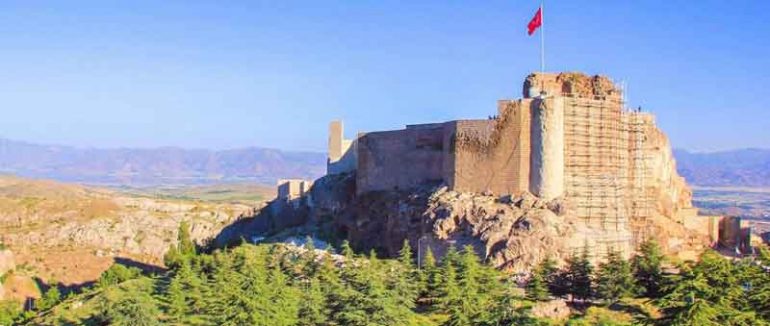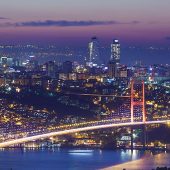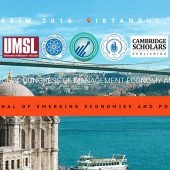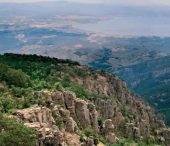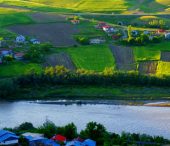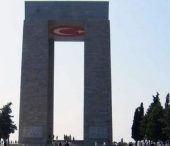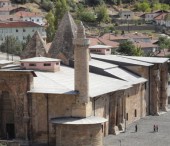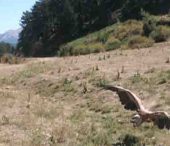Elazığ is a city in the Elazığ Province of eastern Turkey and the seat of the province. It has a population of 266,495 (2000 census). The city is 1067 meters above sea level. It occupies the location of what the Turkish, Zaza and Kurdish-speaking inhabitants of the region called Mezre or Mezra, meaning simply "a hamlet" in both Turkish and Kurdish
Name
Contemporary Elazığ was initially an extension to the historic city of Harput, anciently known as Arsamosata, which was situated on a hill and difficult to access in winter. Under the reign of Mahmud II, the governor Reşid Mehmed Pasha started the expansion of Mezre, which lay on the plains a short distance from Harput. During the reign of Sultan Abdülazîz, military barracks, a hospital and a governor's mansion were built to accommodate the seat of a new vilâyet (province).
The city was named "Mamûret'ül-Azîz" in 1866 on the occasion of the fifth anniversary of enthronement of the Ottoman Sultan Abdülaziz although he was not the initial founder. The city was known many years as "Elâzîz" due to its ease of pronunciation until November 17, 1937, when President Mustafa Kemal Atatürk changed the name of the city to "Elazık" (the city of food). However, since it was hard to pronounce this word in Turkish, on December 10, 1937 the government changed the city's name to its final form, "Elazığ".
History
The area near Elazığ has been settled for centuries. An ancient town and citadel called Kharput (Kharpert) which means "rocky fortress," was built by the first Armenian kings about three miles from modern Elazığ. However, there is very little written about this city. While Harput is still settled today, due to its high elevation and lack of water, it is slowly abandoned, with most residents moving to Elazığ. The two cities are in constant communication and Harput still has about 30,000 inhabitants.
Harput probably stands on or near the site of Carcathio-certa in Sophene, reached by Corbulo in A.D. 65. The early Muslim geographers knew it as Hisn Ziyad, but the Armenian name was Khartabirt or Kharbirt, whence Kharput and Harput.
William of Tyre wrote that Joscelin I, Count of Edessa (Jocelyn) of Courtenay, and King Baldwin II of Jerusalem were prisoners of the Amir Balak in Kharput's castle and that they were rescued by their Armenian allies. William of Tyre calls the place Quart Piert or Pierre.
Contemporary Elazığ was founded and became the provincial seat in 1834. The Mart Maryam Church (Syriac Orthodox) in Harput, Turkey --the first church in Harput-- was built in 179 A.D, and was attended by Christians who considered themselves Syriacs, distinct from the Armenians of Harput.
An Armenian Catholic diocese of Kharput was created in 1850.
The vilâyet of Mamûret'ül-Azîz was founded in 1878 comprising three districts of Diyarbakır province. It has much mineral wealth, a healthy climate and a fertile soil.
Harput was an important station of the American missionaries for many years. The missionaries built the Euphrates College, a theological seminary, and boys' and girls' schools. In November 1895, Kurds massacred, looted and burned the Armenian villages on the plain; and in the same month Kharput was attacked and the American schools were burned down. A large number of the Gregorian and Protestant Armenian clergy and people were massacred, and churches, monasteries and houses were looted. During the Armenian Genocide, the pupils at the Euphrates College were wiped out with most of them being taken to "death, exile or Muslim homes." In the pre-1970s Armenian-American community, more people were born in or traced their ancestry to Elazığ than any other area of Turkey. This Elazığ-America connection was possibly helped by the presence of the many American missionaries.
Elazığ today
Elazığ today is the capital of the Elazığ province, a bustling city with a university and an industrial base, although historic monuments are understandably scarce. The exception is of course the ancient Harput citadel and town, a dependency of the greater municipality of Elazığ today situated three miles to the north of the city center. The population of Elazığ is a mixture of Turks, Kurds and Azeris.
Geography and climate
Elazığ is situated on the northwest corner of a 30-mile-long valley, known locally as Uluova (literally the Great Valley). The Armenians called this valley "Vosgetashd" which means "Golden Plain." Its altitude is 3,300 feet: latitude and longitude are respectively: 38 degrees and 41 minutes North, and 39 degrees and 14 minutes East. Elazığ Province is surrounded by the Euphrates in the north, and since the completion of Keban Dam the rivers came to cover almost ten percent of the surface area (826 km²) of the province (8,455 km²). Elazığ's adjacent province borders are with: Tunceli (North), Erzincan (North-West), Bingöl (East), Diyarbakır (South), and Malatya (West).

